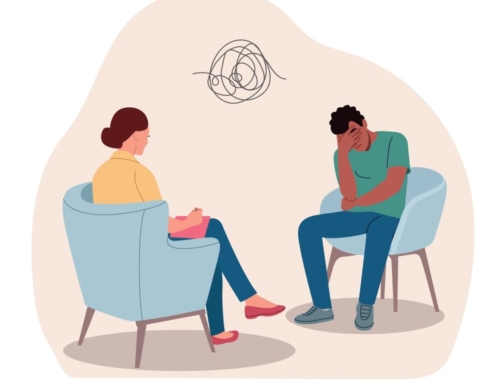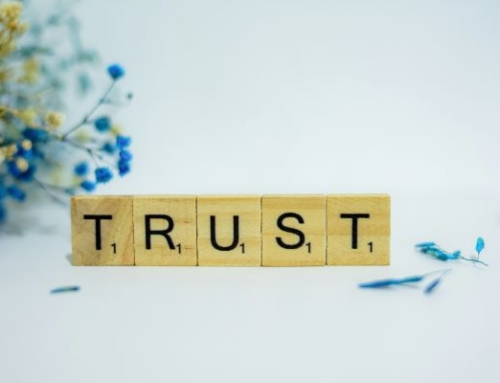Sexual Harassment is Trauma – Part II: Mental Health and Relationship Consequences

Read the first part here:
Sexual Harassment is Trauma – Part 1: Mind-Body Consequences
Sexual harassment is not just a benign workplace issue. The long-term effects are often akin to those of outright assault. This article is a continuation of a previous article discussing what constitutes sexual harassment and how it can affect the body. Read on to see how it affects the mind and your relationships.
Anxiety and Depression
It might seem obvious at this point that if you have a heightened fight/flight/freeze response, feel shameful and down on yourself, and/or have an identity defined by violating experiences, that you would be at risk for anxiety and depression.
Anxiety is defined by a state of internal fear and tension. Regardless of whether you recognize how what happened to you has impacted you, the body may become consumed by fear of something bad happening again in the future. When a state of fear becomes the norm, the body becomes chronically revved up to take action. Eventually, anxiety can take on a life of its own and may become unrecognizable as having been created by earlier events. All you know is that you feel jumpy, worried all the time, or have sore muscles and digestive issues.
Depression, on the other hand, can be a sort of shutting down process. While certainly not mutually exclusive from anxiety (in fact, they often co-occur together), it is a state where the body is giving up rather than getting ready to fight. The underlying feelings of a depressed state are usually learned helplessness (where you have learned over time that no matter what you do or say, it doesn’t really seem to matter) and/or anger turned inward. Depression, too, can take on a life of its own where if it goes on long enough, it becomes so much harder to find the energy or motivation to do what’s needed to feel better. Things become messy, relationships become effected, and you tend to feel increasingly worse about yourself, thereby creating a vicious cycle that reinforces the original self-directed anger and helplessness that started it.
Sometimes, faking it til you make it can work pretty well in creating actual change. In this sense, it can be helpful to challenge the way you think, even if it feels fake or forced. Take a moment to answer and reflect on the following questions:
-
- What are some actions that you can take to challenge your self-critical or self-defeating thoughts and worries?
- Name one thing that you can do to help you take charge of your life in a new way, no matter how big or small.
- Where can you go to enjoy some nature? How can you incorporate more nature into your daily living? (think: houseplants, the park, walks by the water, etc.)
- What is a healthy and nutritious food you can add into your diet?
- Name 3 things that you feel competent to do or perform.
- What makes you feel good? If nothing, what makes you feel less bad?
- Name 3 things that happened today that you are appreciative of.
Posttraumatic Stress
The defining characteristics of posttraumatic stress are intrusive reminders of past trauma, such as flashbacks or nightmares, hypervigilance to perceived threats, and avoidance of any reminders of past trauma. Often times, extreme anger and irritability are experienced due to always being on the lookout for bad things, not feeling safe with people, and being on edge due to constant triggers and anxiety. Some people also experience dissociation, which can be experienced as a sort of brain fogginess or extreme forgetfulness. In more severe cases, it can feel like being separated from your own self or parts of yourself/body.
Being in a state of intense anxiety and fear can create a lot of problems in your life. You might have difficulties at work. It’s hard to find joy or play. Relationships suffer. And, in some cases, it can lead to destructive efforts to make it all go away by excessive drinking, substance use, self-harm, or risk-taking behaviors.
This is the result of the fight/flight/freeze response gone haywire. The best way to begin tackling the myriad effects of the traumatized brain is through physical interventions, such as several mentioned above. The fight/flight/freeze system needs to essentially be turned off in order to address some of the psychological and existential aspects of trauma.
Mindfulness is something that seems so simple, yet can be very hard to do for long. When the brain gets hijacked by trauma, it tends to exist only partially in the present while most being informed by the past while anticipating the future. Refocusing on what is right now and right here can allow the brain to start to realize that it is, in fact, safe. At least in this moment. .
So, let’s take a few minutes to practice mindfulness.
Wherever you are sitting or laying down at the moment, place your feet on the floor. This allows you to feel rooted or grounded to the earth below you. Notice how your feet feel touching the surfaces surrounding them. Notice gravity pulling you to the ground below you and the heaviness of your body in this space.
Notice the temperature around you. How does your skin feel? Is there anything touching you? Is there any breeze?
What about smell? Are the any scents that you notice?
Do you hear any noises? Are they loud or soft? Take a moment to really notice all the various sounds around you, no matter how faint.
How does your body feel in this space? Is there any tension or other feelings in your body? Are you comfortable and contained?
Take a few moments to just breathe and sit with all of the sensations and awareness of this moment. Take note of the fact that right here right now you are safe. You are here now and now is safe.
Relationship and sexual problems
It likely is not surprising that if you develop a narrative and identity based in shame, secrecy, hypervigilance, anxiety, and depression, that it would be difficult to trust someone or be vulnerable. Relationships, especially romantic ones, require increasing levels of intimacy, safety, warmth, and trust in order to thrive. Internalized feelings of self-criticism, defectiveness, and anger can become a huge barrier to these feelings.
When you’ve been violated and made to feel like there is something wrong with you, it is likely that you will also be on the lookout for future violations and wrong-doings to the point of sometimes even making them happen. If you find yourself frequently pushing others away, feeling hurt and violated by others, and/or feeling scared of or disgusted by being close to others, it is likely that your past is haunting your present.
With sexual harassment and assault, particularly, it can be very difficult to enjoy sexual experiences in a healthy way. Any type of sexual encounter can be a reminder or trigger of previous violations. These triggers can lead both to discomfort or an inability to enjoy sexual experiences. It also can lead to an opposite extreme of acting out with promiscuity or cheating behaviors. These experiences can become yet another source of shame and can reinforce problematic narratives and feelings already in place. Plus, it is another area that may contribute to long-term relationship problems as well.
It is important to understand that there are very valid reasons for your feelings and reactions. They might not always be valid in regards to your current partner(s), but they are real and they are there for a reason. Further chastising yourself for having any of the issues laid out in this chapter will only exacerbate the pain and struggle. You are working through difficult emotions and experiences, and the work is really hard! It is adaptive and normal for your brain and body to protect you from future threats when you’ve been hurt in the past. This is evolutionary survival at its finest.
The first step in being able to regain power of your sexuality and to be able to have healthy long-lasting relationships is to understand why you might have some of the difficulties you’re experiencing in the first place. Is it because you are picking people who reinforce shameful feelings about yourself? Are you provoking others in such a way to meet the fear-based expectations you might have of others and yourself? Are you sometimes reacting from a place of being triggered and not always able to see the present reality for what it is? If so, ask yourself why? Try journaling to explore these questions from a place of curiosity rather than judgment. Try to understand the place of pain that some of these issues might be stemming from.
Now that you have a better understanding of the mechanisms behind some of your thoughts, feelings, and behaviors, you can start to realize that you are not bad or defective at all. You needed to develop all of these strategies and mechanisms in order to feel safe and to cope with overwhelming and hurtful past experiences. Once you can learn to stop criticizing and blaming yourself for what happened to you, you can move in a direction of forgiveness and compassion.
The following is a visualization exercise to begin developing a sense of compassion for your hurt or traumatized self. Make sure that you are in a comfortable and safe place before beginning this exercise. You may experience some intense or surprising emotions. That’s ok. If it’s too much, stop the exercise and move your body a little. A few jumping jacks can be a quick tool to ground yourself if feeling overwhelmed or dissociated. You also can refer to your list of people to reach out to when triggered. Otherwise, try to take your time with this exercise and let any emotions or images arise as they are. Try not to judge but rather just to notice.
Imagine that you are looking for something to watch on tv when you come across a video of the version of you that holds all of the pain and anger from being a victim of sexual harassment. Notice how you move and the things you are saying to yourself. What sorts of critical or abusive words or behaviors do you see? Try not to judge or put a story to them, just notice. Imagine that someone enters the scene who is kind, nurturing, and entirely safe. They are there to help. What might that person be saying or doing? What kind words of validation or support do you hear? How does the you in the video react? Imagine that the scene ends with the safe person providing a sense of comfort. What allows that to happen? Is it a hug? The right words of understanding? Something else? Now imagine the person leaves and you are left there to take in what just happened. Feel free to jot down some of your reactions during this exercise.
Continued from: Sexual Harassment is Trauma – Part 1: Mind-Body Consequences
**If you or a loved one are a victim of sexual harassment, please either reach out to one of our clinicians or contact RAINN, a 24 hour sexual assault resource for those in immediate need.









